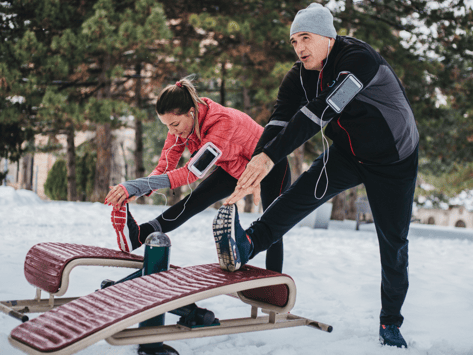 Taking my workouts outside is an easy way to soak up the benefits of nature and switch up my normal gym routine. That being said, I understand that exercising outdoors isn’t exactly the same as exercising inside, and there are some necessary precautions I always take into consideration when completing my outdoor workout.
Taking my workouts outside is an easy way to soak up the benefits of nature and switch up my normal gym routine. That being said, I understand that exercising outdoors isn’t exactly the same as exercising inside, and there are some necessary precautions I always take into consideration when completing my outdoor workout.
1. Map My Route Ahead of Time
I am probably the worst person to ask for directions. The GPS was invented for people like me, and I am so thankful to have one with me at all times (thanks to my phone!). Whether I am going for a jog, bike ride, or walk, or completing an outdoor circuit workout, I always make sure to plan my route ahead of time (so I don’t get lost) and show someone else the route I will be taking. This way, if I do get lost or injured, or am not home when I expected to be, someone knows where to find me.
2. Bring My Cell Phone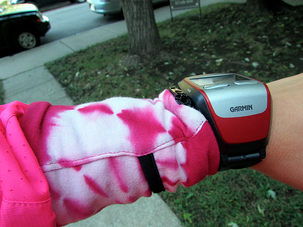
Yes, it’s cumbersome and I would prefer to feel “free” and not have it with me while running outdoors, but I know that if I were to fall, or get lost, or for some reason I wasn’t able to make it back home, I could give someone a call to help me. I keep it in my Sprigs Banjee Wrist Wallet so I can listen to music or a podcast, or I keep it in my SPIbelt. Either way, it allows me to keep my hands free. I also have an ICE (In Case of Emergency) number in my phone. I have heard that emergency professionals are trained to look for an ICE number in cell phones to notify a loved one in an emergency situation.
3. Carry an ID
I always carry an ID with me, but that doesn’t mean I always bring my driver’s license along. My Road ID bracelet is the perfect running accessory that contains my name, my husband and parents’ names and contact information, and my age—all important things “just in case” there is an emergency. I love that it is on my  wrist and I often forget I am wearing it because it is so lightweight and comfortable.
wrist and I often forget I am wearing it because it is so lightweight and comfortable.
4. Beware of Dogs
Recently, a coworker and fellow NIFS employee who is a runner informed me that one of her friends was attacked by a dog while running. Hearing her story really got me thinking, because luckily I have not come into a negative encounter with a dog while running. Here are some canine safety tips I keep in mind when running and exercising outdoors:
- Do not run from the dog; this can stimulate the animal.
- Stand perfectly still with hands and fists close to the body.
- Don't yell or say anything.
- Don't look the dog in the eye; this can be threatening.
- Do not use mace on an animal; it is not strong enough and will upset it more.
5. Wear Reflective Gear
When running in the evening or in the early morning while the sun is rising, I always make sure to wear some sort of reflective gear. I prefer to choose clothing that has the reflective gear “built in,” but you can easily purchase reflective vests to wear over your clothes. Wearing reflective gear makes it easier for cars and bicyclists to see me when I am coming their way, which makes me safer while getting my outdoor workout on.
6. Check the Weather
The weather often dictates whether I take my exercise outside or keep it indoors. If it’s raining, chilly, or super hot, I will opt for an indoor workout. That is, unless I am training for a race. Often when I am training for a race I will head outside to train in less than ideal conditions. Exercising in the elements may seem intimidating, but when I am dressed properly I can go out in all kinds of weather! When dressing for cooler weather, I always layer my clothing. This helps trap the heat in and gives me the option to get rid of some clothing articles if I get too warm. That being said, if the roads are dangerously icy, if a rain storm brings thunder and lightning, or if there is a heat warning I will always pick safety first and move my run to the indoor track or treadmill.
7. I Don’t Blast My Music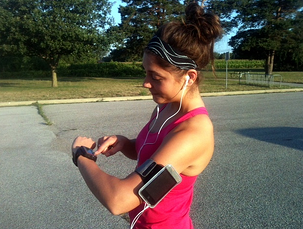
I love listening to music and podcasts while I run and exercise because they really help me enjoy the workout even more than I already do. While I love listening to my music and podcasts, I make sure not to blast the music so I can hear oncoming cars, people, bikers, and anything else that I may not be expecting to come my way. I know how easy it is for me to “get in the zone,” but I try to stay as alert as possible when exercising outdoors, especially if I am not with a buddy.
What are some of your tips for staying safe during your outdoor workouts? Share them here.
This blog was written by Tara Deal Rochford, NIFS Membership Manager and a group fitness instructor. Author of Treble in the Kitchen. Meet our other NIFS bloggers.
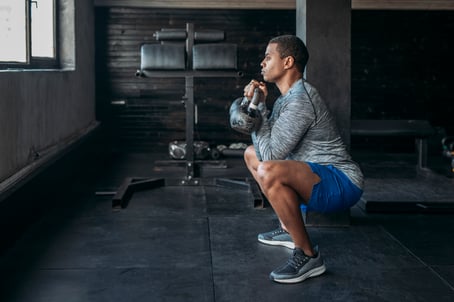 Bring in the summer with some fun ideas to get your fitness goals accomplished. Completing both circuits will help you get a jump-start on your fitness goals going into this summer. This workout can be done outside or in the gym.
Bring in the summer with some fun ideas to get your fitness goals accomplished. Completing both circuits will help you get a jump-start on your fitness goals going into this summer. This workout can be done outside or in the gym.

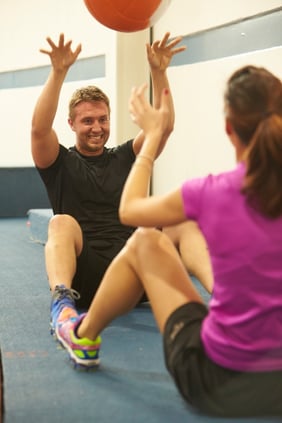 Love to workout and need a date idea for Valentine’s Day? We have just the workout for you!
Love to workout and need a date idea for Valentine’s Day? We have just the workout for you!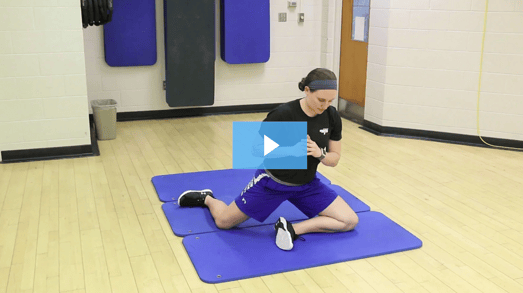
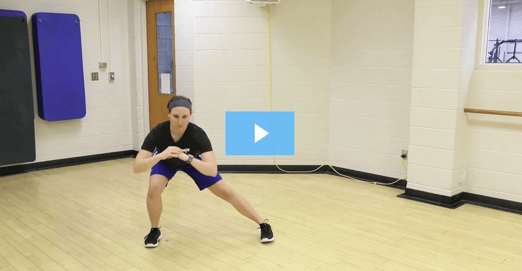
 ’Tis the season for swapping Christmas cookies, candy bowls, Hanukah dinners, holiday parties, and New Year’s Eve libations. We’ll take this month to refocus on a 10 simple ways to keep your body properly nourished and healthy this holiday season while keeping in mind that it is okay and certainly encouraged to partake in the holiday season festivities. New Year’s Resolutions are a great time to start new habits, but why not get a head start?
’Tis the season for swapping Christmas cookies, candy bowls, Hanukah dinners, holiday parties, and New Year’s Eve libations. We’ll take this month to refocus on a 10 simple ways to keep your body properly nourished and healthy this holiday season while keeping in mind that it is okay and certainly encouraged to partake in the holiday season festivities. New Year’s Resolutions are a great time to start new habits, but why not get a head start?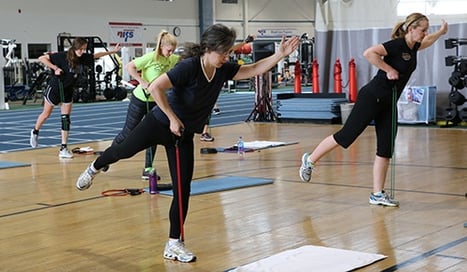 If you take a few minutes to google the various types of fitness training out there, you will come up with a list of about 10 different ones, and then 10 more different variations of each of those. And each year more and more “fitness trends” come out, making it quite confusing for the consumer as to what to choose and where to start. It can be confusing and even frustrating choosing what is right for you and your body.
If you take a few minutes to google the various types of fitness training out there, you will come up with a list of about 10 different ones, and then 10 more different variations of each of those. And each year more and more “fitness trends” come out, making it quite confusing for the consumer as to what to choose and where to start. It can be confusing and even frustrating choosing what is right for you and your body. 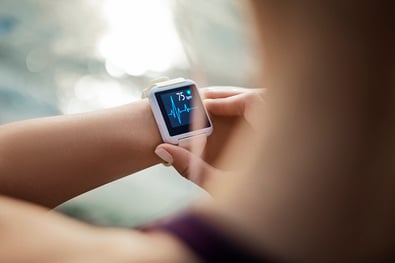 This type of training is specific to each individual and their personal zones. You can read more
This type of training is specific to each individual and their personal zones. You can read more 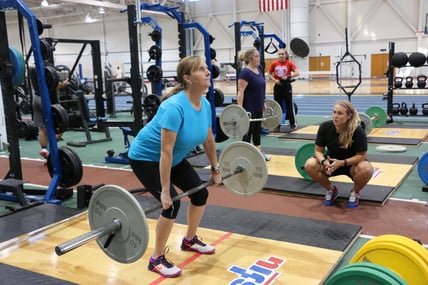 Strength training typically is done with heavy weight but can be done with lighter ones as well. This style of training is directly associated with Newton’s law: mass x acceleration = force.
Strength training typically is done with heavy weight but can be done with lighter ones as well. This style of training is directly associated with Newton’s law: mass x acceleration = force. 





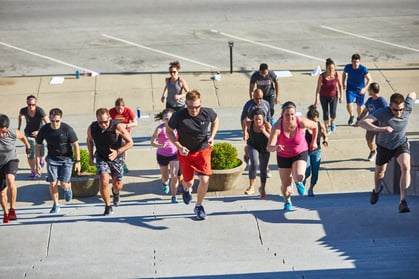 Boot Camp. Immediately thoughts of drill sergeants, whistles, and large combat boots come to mind. This, however, is a different kind of boot camp.
Boot Camp. Immediately thoughts of drill sergeants, whistles, and large combat boots come to mind. This, however, is a different kind of boot camp.  Boot Camp is suitable for participants of a moderate to intermediate fitness level, and is great conditioning for adventure and obstacle-course–style races. Prepare to be challenged during this 60-minute workout.
Boot Camp is suitable for participants of a moderate to intermediate fitness level, and is great conditioning for adventure and obstacle-course–style races. Prepare to be challenged during this 60-minute workout.